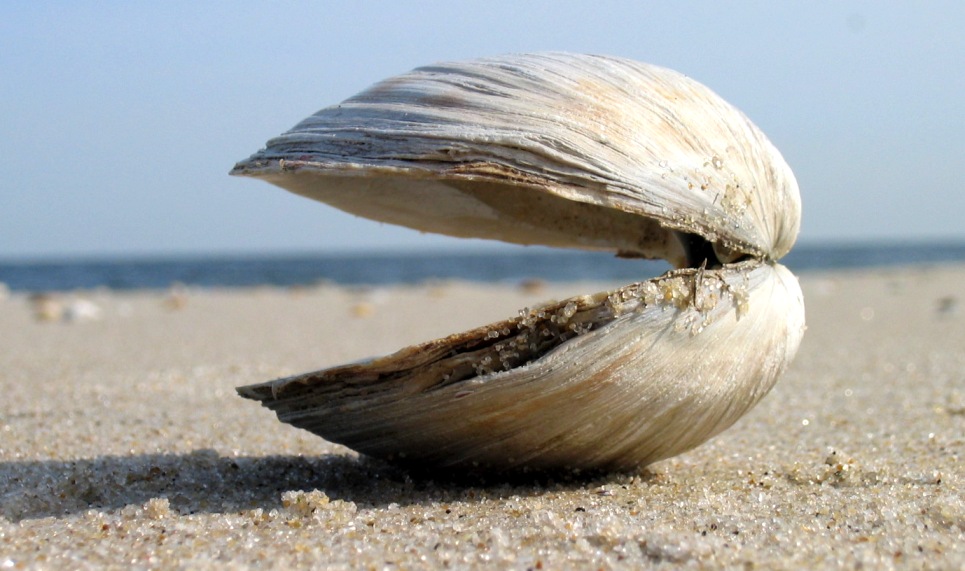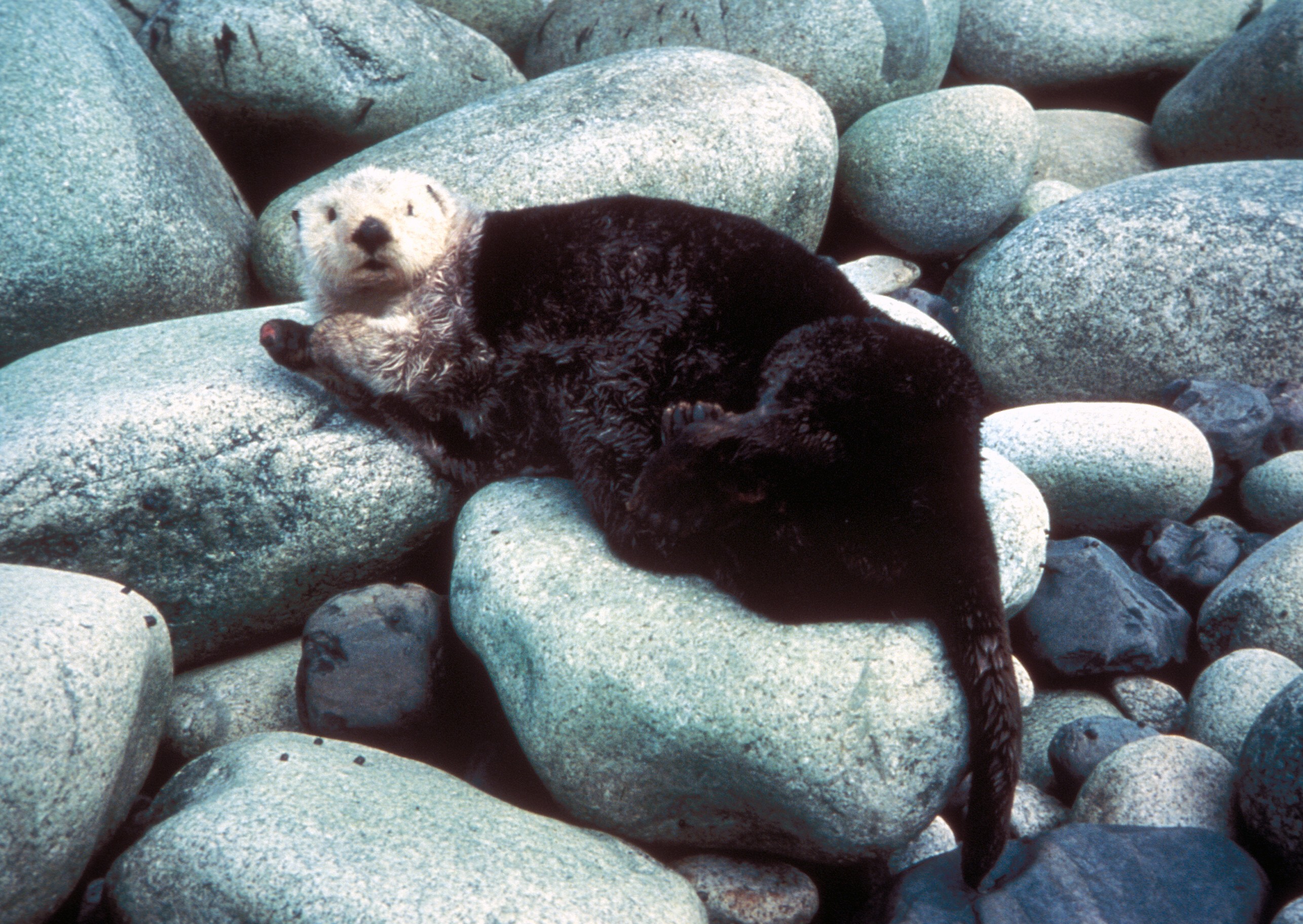|
Geoduck
The Pacific geoduck ( ; ''Panopea generosa'') is a species of very large saltwater clam in the family Hiatellidae. The common name is derived from the Lushootseed name, . The geoduck is native to the coastal waters of the eastern North Pacific Ocean from Alaska to Baja California. The shell of the clam ranges from to over in length, but the extremely long siphons make the clam itself much longer than this: the "shaft" or siphons alone can be in length. The geoduck is the largest burrowing clam in the world. It is also one of the longest-living animals of any type, with a typical lifespan of 140 years; the oldest has been recorded at 179 years old. The precise longevity of geoducks can be determined from annual rings deposited in the shell which can be assigned to calendar years of formation through crossdating. These annual rings also serve as an archive of past marine variability. Etymology The name ''Geoduck'' is derived from the Lushootseed name for the animal, . The ... [...More Info...] [...Related Items...] OR: [Wikipedia] [Google] [Baidu] [Amazon] |
Panopea Zelandica
''Panopea zelandica'', commonly known as the deepwater clam or New Zealand geoduck, is a large species of marine bivalve mollusc in the ''Panopea'' (geoduck) genus of the family Hiatellidae. It is also sometimes called a king clam, or a gaper – in reference to the shell not being closed at either end. It is found around the North, South South is one of the cardinal directions or compass points. The direction is the opposite of north and is perpendicular to both west and east. Etymology The word ''south'' comes from Old English ''sūþ'', from earlier Proto-Germanic ''*sunþa ... and Stewart islands and occurs mainly in shallow waters (5–25 metres) in sand and mud off sandy ocean beaches. - New Zealand Ministry of Fisheries. Another geoduck species, '' ... [...More Info...] [...Related Items...] OR: [Wikipedia] [Google] [Baidu] [Amazon] |
Clam
Clam is a common name for several kinds of bivalve mollusc. The word is often applied only to those that are deemed edible and live as infauna, spending most of their lives halfway buried in the sand of the sea floor or riverbeds. Clams have two shells of equal size connected by two adductor muscles and have a powerful burrowing foot. They live in both freshwater and marine environments; in salt water they prefer to burrow down into the mud and the turbidity of the water required varies with species and location; the greatest diversity of these is in North America. Clams in the culinary sense do not live attached to a substrate (whereas oysters and mussels do) and do not live near the bottom (whereas scallops do). In culinary usage, clams are commonly eaten marine bivalves, as in clam digging and the resulting soup, clam chowder. Many edible clams such as palourde clams are ovoid or triangular; however, razor clams have an elongated parallel-sided shell, suggesting ... [...More Info...] [...Related Items...] OR: [Wikipedia] [Google] [Baidu] [Amazon] |
Siphon (mollusc)
A siphon is an anatomical structure which is part of the body of aquatic molluscs in three Class (biology), classes: Gastropoda, Bivalvia and Cephalopoda (members of these classes include saltwater and freshwater snails, clams, octopus, squid and relatives). Siphons in molluscs are tube-like structures in which water (or, more rarely, air) flows. The water flow is used for one or more purposes such as animal locomotion, locomotion, feeding, respiration (physiology), respiration, and reproduction. The siphon is part of the mantle (mollusc), mantle of the mollusc, and the water flow is directed to (or from) the Mantle (mollusc)#The mantle cavity, mantle cavity. A single siphon occurs in some gastropods. In those bivalves which have siphons, the siphons are paired. In cephalopods, there is a single siphon or funnel which is known as a hyponome. In gastropods In some (but not all) sea snails, Marine (ocean), marine gastropod molluscs, the animal has an anterior extension of the man ... [...More Info...] [...Related Items...] OR: [Wikipedia] [Google] [Baidu] [Amazon] |
Alaska
Alaska ( ) is a non-contiguous U.S. state on the northwest extremity of North America. Part of the Western United States region, it is one of the two non-contiguous U.S. states, alongside Hawaii. Alaska is also considered to be the northernmost, westernmost, and easternmost (the Aleutian Islands cross the 180th meridian into the eastern hemisphere) state in the United States. It borders the Canadian territory of Yukon and the province of British Columbia to the east. It shares a western maritime border, in the Bering Strait, with Russia's Chukotka Autonomous Okrug. The Chukchi and Beaufort Seas of the Arctic Ocean lie to the north, and the Pacific Ocean lies to the south. Technically, it is a semi-exclave of the U.S., and is the largest exclave in the world. Alaska is the largest U.S. state by area, comprising more total area than the following three largest states of Texas, California, and Montana combined, and is the seventh-largest subnational division i ... [...More Info...] [...Related Items...] OR: [Wikipedia] [Google] [Baidu] [Amazon] |
Biological Specimen
A biological specimen (also called a biospecimen) is a biological laboratory specimen held by a biorepository for research. Such a specimen would be taken by sampling so as to be representative of any other specimen taken from the source of the specimen. When biological specimens are stored, ideally they remain equivalent to freshly-collected specimens for the purposes of research. Human biological specimens are stored in a type of biorepository called a biobank, and the science of preserving biological specimens is most active in the field of biobanking. Quality control Setting broad standards for quality of biological specimens was initially an underdeveloped aspect of biobank growth. There is currently discussion on what standards should be in place and who should manage those standards. Since many organizations set their own standards and since biobanks are necessarily used by multiple organizations and typically are driven towards expansion, the harmonization of standa ... [...More Info...] [...Related Items...] OR: [Wikipedia] [Google] [Baidu] [Amazon] |
Microsporidium
Microsporidia are a group of spore-forming unicellular parasites. These spores contain an extrusion apparatus that has a coiled polar tube ending in an anchoring disc at the apical part of the spore.Franzen, C. (2005). How do Microsporidia invade cells?. Folia Parasitologica, 52(1–2), 36–40. doi.org/10.14411/fp.2005.005 They were once considered protozoans or protists, but are now known to be fungi, or a sister group to true fungi. These fungal microbes are obligate eukaryotic parasites that use a unique mechanism to infect host cells. They have recently been discovered in a 2017 Cornell study to infect Coleoptera (beetles) on a large scale. So far, about 1500 of the probably more than one million species are named. Microsporidia are restricted to animal hosts, and all major groups of animals host microsporidia. Most infect insects, but they are also responsible for common diseases of crustaceans and fish. The named species of microsporidia usually infect one host species or ... [...More Info...] [...Related Items...] OR: [Wikipedia] [Google] [Baidu] [Amazon] |
Plankton
Plankton are the diverse collection of organisms that drift in Hydrosphere, water (or atmosphere, air) but are unable to actively propel themselves against ocean current, currents (or wind). The individual organisms constituting plankton are called plankters. In the ocean, they provide a crucial source of food to many small and large aquatic organisms, such as bivalves, fish, and baleen whales. Marine plankton include bacteria, archaea, algae, protozoa, microscopic fungi, and drifting or floating animals that inhabit the saltwater of oceans and the brackish waters of estuaries. fresh water, Freshwater plankton are similar to marine plankton, but are found in lakes and rivers. Mostly, plankton just drift where currents take them, though some, like jellyfish, swim slowly but not fast enough to generally overcome the influence of currents. Although plankton are usually thought of as inhabiting water, there are also airborne versions that live part of their lives drifting in the at ... [...More Info...] [...Related Items...] OR: [Wikipedia] [Google] [Baidu] [Amazon] |
Predator
Predation is a biological interaction in which one organism, the predator, kills and eats another organism, its prey. It is one of a family of common List of feeding behaviours, feeding behaviours that includes parasitism and micropredation (which usually do not kill the Host (biology), host) and parasitoidism (which always does, eventually). It is distinct from Scavenger, scavenging on dead prey, though many predators also scavenge; it overlaps with Herbivore, herbivory, as Seed predation, seed predators and destructive frugivores are predators. Predation behavior varies significantly depending on the organism. Many predators, especially carnivores, have evolved distinct hunting strategy, hunting strategies. Pursuit predation involves the active search for and pursuit of prey, whilst ambush predation, ambush predators instead wait for prey to present an opportunity for capture, and often use stealth or aggressive mimicry. Other predators are opportunism, opportunistic or om ... [...More Info...] [...Related Items...] OR: [Wikipedia] [Google] [Baidu] [Amazon] |
Augustus Addison Gould
Augustus Addison Gould (April 23, 1805 – September 15, 1866) was an American naturalist and the foremost conchologist of his era. He described over 1,100 new species of mollusks, including all known mollusks of Massachusetts and the shells collected by two major government exploring expeditions. He was one of the first naturalists in America to recognize the importance of geographic distribution in the description of species. Biography Born in New Ipswich, New Hampshire, he was the son of music teacher Nathaniel Duren Gould (1781–1864) who was also noted for his penmanship. Physician He graduated from Harvard College in 1825, and took his degree of doctor of medicine in 1830. "Establishing himself in Boston, he devoted himself to the practice of medicine, and finally rose to high professional rank and social position. He became president of the Massachusetts Medical Society, and was employed in editing the vital statistics (government records), vital statistics of the state ... [...More Info...] [...Related Items...] OR: [Wikipedia] [Google] [Baidu] [Amazon] |
Sea Otter
The sea otter (''Enhydra lutris'') is a marine mammal native to the coasts of the northern and eastern Pacific Ocean, North Pacific Ocean. Adult sea otters typically weigh between , making them the heaviest members of the Mustelidae, weasel family, but among the smallest marine mammals. Unlike most marine mammals, the sea otter's primary form of insulation is an exceptionally thick coat of fur, the densest in the animal kingdom. Although it can walk on land, the sea otter is capable of living exclusively in the ocean. The sea otter inhabits nearshore environments, where it dives to the sea floor to Foraging, forage. It preys mostly on marine Invertebrate, invertebrates such as sea urchins, various mollusks and crustaceans, and some species of fish. Its foraging and eating habits are noteworthy in several respects. Its Tool use by sea otters, use of rocks to dislodge prey and to open shells makes it one of the few mammal species to use tools. In most of ... [...More Info...] [...Related Items...] OR: [Wikipedia] [Google] [Baidu] [Amazon] |
Bivalve
Bivalvia () or bivalves, in previous centuries referred to as the Lamellibranchiata and Pelecypoda, is a class (biology), class of aquatic animal, aquatic molluscs (marine and freshwater) that have laterally compressed soft bodies enclosed by a calcified exoskeleton consisting of a hinged pair of half-bivalve shell, shells known as valve (mollusc), valves. As a group, bivalves have no head and lack some typical molluscan organs such as the radula and the odontophore. Their gills have evolved into ctenidium (mollusc), ctenidia, specialised organs for feeding and breathing. Common bivalves include clams, oysters, Cockle (bivalve), cockles, mussels, scallops, and numerous other family (biology), families that live in saltwater, as well as a number of families that live in freshwater. Majority of the class are benthic filter feeders that bury themselves in sediment, where they are relatively safe from predation. Others lie on the sea floor or attach themselves to rocks or other h ... [...More Info...] [...Related Items...] OR: [Wikipedia] [Google] [Baidu] [Amazon] |







